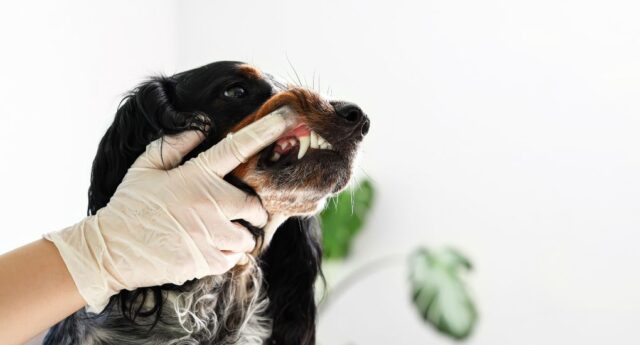
Table of Contents
You might have thought about this question while brushing your dog's teeth. “How many teeth do dogs have?”
Do dogs have the same number of teeth as humans? Do they also lose puppy teeth just like baby teeth?
Dental care is crucial to our pups.
Monitoring our dog’s teeth is important since oral health problems are common, especially in aging dogs.
Ensuring your dog’s teeth are clean and maintained can lead to a healthier and happier life.
This blog will discuss everything you need about your dog’s teeth.
We’ll tackle how many teeth dogs have as puppies and adults and if it’s normal for them to lose teeth.
Below, we’ll also discuss your dog’s different types of teeth. And if you want tips, we’re here to help you care for your dog’s dental health.
Without further ado, let’s get right into it!
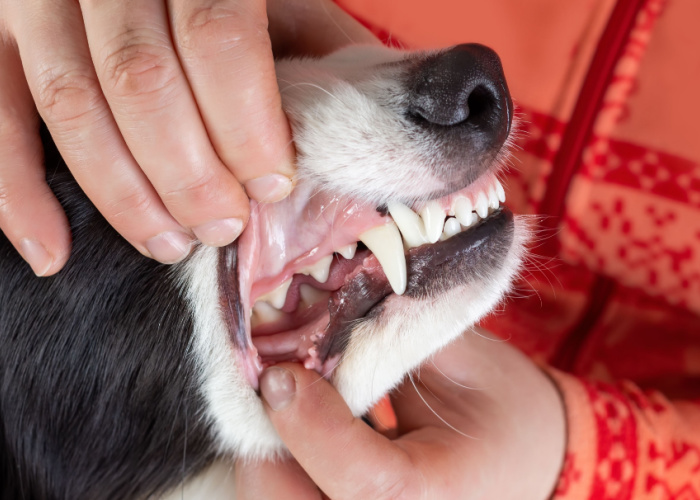
How Many Teeth Do Dogs Have?
So… how many teeth does my dog have?
The number of teeth in a dog’s mouth changes as they grow from being puppies to adult dogs.
Number of Puppy Teeth
First, let’s tackle puppy teeth.
If you don't know yet, puppies are born without teeth.
It’s not until they are 3 to 4 weeks old when their puppy teeth start to erupt.
By the time they are 3-5 months old, they usually have all 28 of their puppy teeth, including the incisors, canines, and premolars.
However, some dogs, specifically toy and small-sized dogs, tend to take longer to develop puppy and adult teeth.
When puppy teeth refuse to fall out on their own and stay in your puppy’s mouth, they are called retained teeth.
Unfortunately, retained teeth can lead to overcrowding.
This can cause abnormal positioning of adult teeth, and they will now be more prone to periodontal problems.
Retained teeth are believed to be a hereditary issue.
It can happen in any dog, but small dog breeds are more susceptible to this condition.
If your pup has retained teeth, your vet will most likely remove them surgically to make room for the adult teeth.
Number of Adult Dog Teeth
The usual age for permanent teeth erupting is 3 to 7 months old.
Adult dogs have 42 permanent teeth as compared to human’s 32 teeth.
The maxilla, also known as the upper jaw, has 20 teeth. While the mandible, or the lower jaw, has 22 teeth.
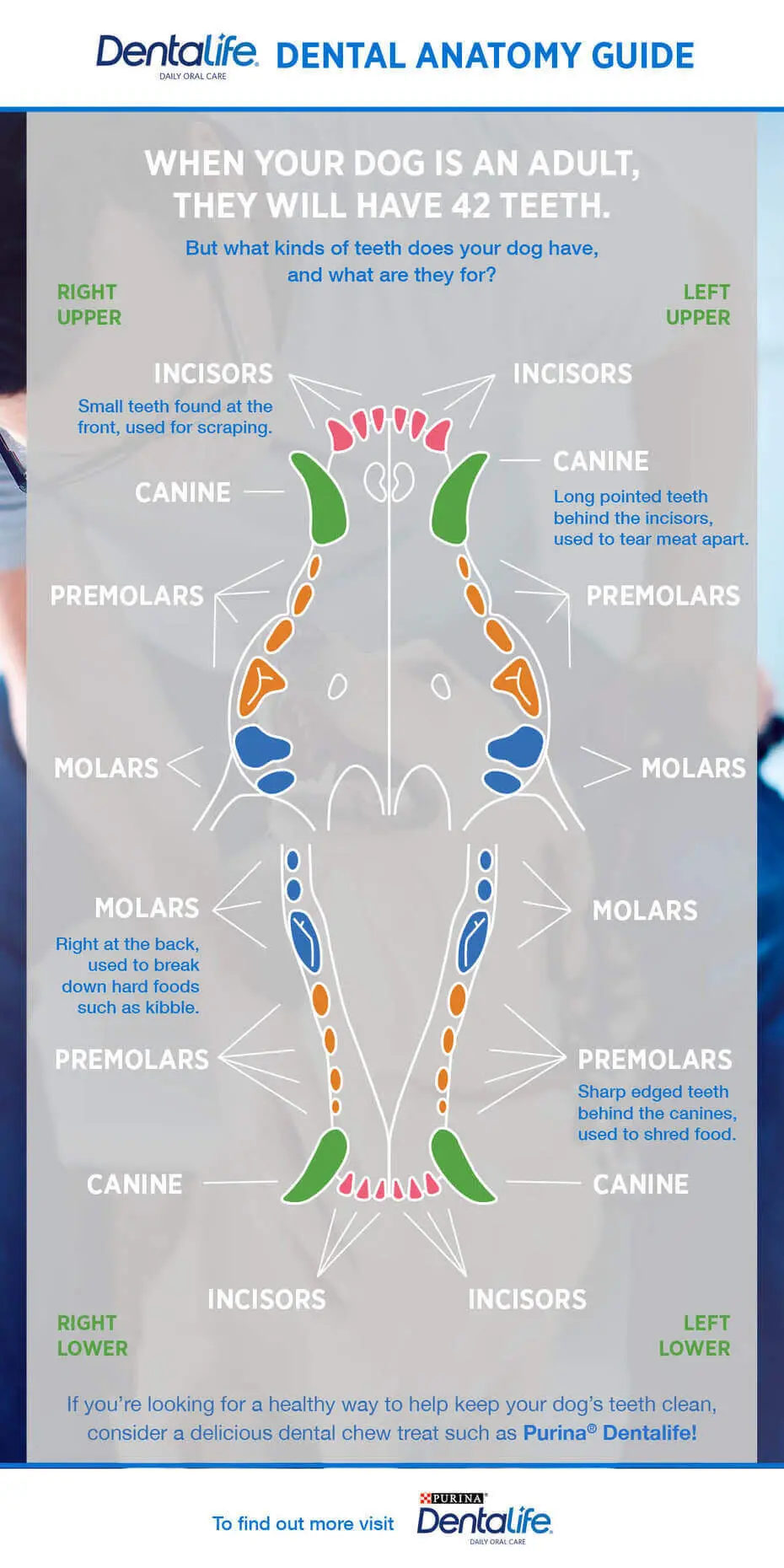
Four Types of Canine Teeth
Now that we’ve discussed how many teeth dogs have, it’s also important to look at the types of teeth dogs have.
Knowing the types of canine teeth can help us better understand our furry friend's chompers.
Why? Well, having a better grasp on your dog’s teeth can help you improve their oral health.
This can prevent diseases and other dental issues that can impact their well-being.
Each type of tooth has a different function. Now, let’s discuss the four types of canine teeth:
Incisors
First, the incisor teeth can be found in front of a dog’s mouth. The top and bottom jaw each have 6 of these, which makes 12 incisors in all.
Incisors are used to grab different objects, such as food. They can also be used for chewing and grooming.
In dogs and cats, incisors are fairly small and only have one root per tooth.
Canines
Secondly, canines are the pointed teeth found at the top and bottom of both sides of a dog’s mouth.
It is commonly known as fangs, which helps them be great at tug-of-war.
It is arranged in pairs: two on top and two on the bottom, which makes 4 canines in total.
This type of tooth is great for piercing and grasping objects.
Premolars
On the other hand, the premolars are located just behind the canines. Adults have 16 premolars. 8 are found on the top of the jaw, and the other 8 at the bottom jaw.
Premolars are used to mow through and grind up food. These teeth can have between 1 or 2 roots per tooth that anchor them.
Molars
Molars are the teeth in the back of a dog’s mouth. They can look a lot like premolars, but there are only 10 molars in total.
There are 4 molars on the top jaw and 6 on the lower jaw. Molars are also used for grinding food into small pieces to make it easy to swallow and digest.
They can have anywhere from 3 roots to 1 root, anchoring them in the dog’s mouth.
Why Do Dogs Lose Teeth?
For aspiring pet owners, you should know that aside from puppy teeth’s transition to adult teeth, it is not normal for dogs to lose teeth.
Consult your vet to ensure your dog’s teeth are clean and healthy.
Here are the most common reasons why dogs lose their adult teeth.
Periodontal Disease
Periodontal disease in dogs is an infection and inflammation of the periodontium (tissues surrounding the teeth).
It is usually caused by bacterial overgrowth in the mouth. If you know what Gingivitis is, then this one’s worse since gingivitis is only considered stage one of the four stages of periodontal disease.
Periodontal disease can affect one tooth or the whole mouth. Next, it’ll damage the bone around the tooth roots. If not treated, it can lead to severe pain, loss of teeth, and other dental issues.
Four Stages of Periodontal Disease
- Stage 1: Gingivitis occurs. Also, there might be some tartar visible. The tooth’s support is not a loss at this stage.
- Stage 2: There is a mild to moderate loss of the bone and ligaments that keep the teeth in place. You’ll see that their gums are much redder and more inflamed.
- Stage 3: Stage three is moderate periodontitis, where up to 50% of the support is lost.
- Stage 4: The last stage is advanced periodontitis. Meaning the bone loss is now 50% or higher. Tartar is very clear in this stage. In this stage, the teeth are damaged, and extraction will most likely be needed.
Symptoms of Periodontal Disease
Monitor your pup closely. It would be best to consult your vet if you notice any of the symptoms below.
- Bad breath
- Weight loss
- Loss in appetite
- Bleeding or inflamed gums
- Discolored teeth
- Loose Teeth
Trauma
Trauma can also be a cause of tooth loss in dogs.
Trauma from chewing something or having another injury in their mouth can make dogs lose their teeth.
As we all know, dogs love to chew.
And because they are curious animals, they might chew on something they shouldn’t, including rocks and other hard objects that are unsafe for chewing.
Chewing these items can lead to tooth loss or other oral injuries like fractured tooth tips, broken jaws, and worn tooth surfaces.
All dogs can experience tooth trauma, no matter the breed or age.
However, traumatic teeth injuries tend to happen more frequently in large-sized dogs since they have stronger jaws, their teeth are taller and more slender, and they are more likely to fight with other dogs.
If you suspect that your dog is suffering from a tooth injury, consult with your vet immediately so they can treat it fast and prevent infections.
Tooth Decay
Another common reason why dogs lose teeth is tooth decay.
Dogs’ teeth are prone to decay, and they wear and tear faster than human teeth since they use their mouths more often.
They do not just use it for eating and drinking. They also use it for picking up objects and carrying things.
Treatment for tooth decay will depend on your vet's assessment.
Still, your vet will most likely recommend a professional cleaning done under general anesthesia and the extraction of any damaged tooth.
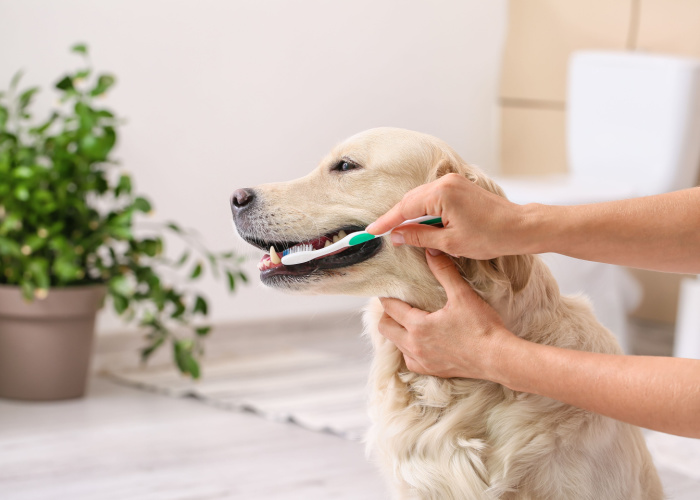
Tips to Keep Your Dog’s Teeth Healthy
Lack of proper dental care can lead to various medical issues affecting your dog’s well-being.
If you notice your dog is not eating or having difficulty eating, he might be suffering from a tooth infection or other tooth-related underlying problem.
Plaque can build up without regular brushing, and different bacteria can lurk around our dog’s mouth.
It can also lead to gingivitis.
Gingivitis is an oral health issue that causes inflamed and sometimes bleeding gums.
This oral problem in dogs is one of the most common diseases, with an estimated prevalence being around 50–70%.
A few symptoms of gingivitis are bad breath, swollen gums, yellow teeth, receding gums, and lack of appetite.
If left untreated, gingivitis can lead to periodontitis, which is stage 4 of periodontal disease in dogs.
Here are a few tips to keep your dog’s teeth healthy.
Brush Daily
Just like humans, dogs can benefit from daily brushing.
Daily teeth brushing is recommended to avoid tartar buildup and remove bacteria lurking inside their mouths.
Try buying dog-friendly toothpaste to make this process easy and enjoyable for Fido.
As pet owners, we must be cautious when picking toothpaste.
For instance, some toothpaste may contain xylitol, a toxic ingredient for dogs. You'd want to avoid that at all costs!
Check out our picks of the best dog toothbrushes and the best dog toothpaste.
Here’s a quick video if you’re struggling to brush your dog’s teeth:
Provide Chew Toys
Chew toys are great to help minimize plaque build-up. It can also help promote strong jaws and teeth, which is important for dogs.
Dogs are also prone to “dog breath,” caused by bacteria build-ups.
Fortunately, some of the best dog chew toys can help break the bacteria apart and improve your Fido’s breath.
Avoid picking hard chew toys since they can damage your dog’s teeth.
Try Dog Dental Treats
While regularly brushing your dog’s teeth is the best way to prevent any oral problems, pets that chew often have less plaque and tartar buildup on their teeth.
That’s because chewing can scrape your dog’s teeth and clean off some of the build-up.
If you plan to give Fido dental treats, we recommend trying Greenies Dental Treats Original.
Dog dental treats are not only delicious but can also help promote healthy dog teeth.
It can also help deal with bad breath in dogs. However, it’s best to consult your vet first and ask for recommendations.
Regular visits to the Vet
Make it a habit to visit the vet to maintain your dog’s health regularly.
Vets can give you the best tips and guidance on approaching your dog’s dental health.
Remember that every dog is unique, and some dogs might need a different approach to their dental hygiene.
The vet can also tell if your dog is suffering from any underlying issues.
Dogs experiencing excessive plaque build-up can go to the vet to get plaque professionally and thoroughly removed.
Frequently Asked Questions
Do all dogs have 42 teeth?
Adult dogs ideally should have at least 42 teeth in total, no matter their size or breed. 20 on top of their jaw and 22 on the bottom.
On the other hand, puppies have only 28 temporary teeth.
How do I know if my dog’s teeth are rotting?
A few signs that your dog’s teeth are rotting are when you notice your dog has bad breath, an inflamed gum line, or a recession of the gum over a tooth.
What happens if you don’t brush a dog’s teeth?
Teeth brushing is important in dogs since it removes food particles and bacteria stuck in our dog’s mouth or teeth.
Lack of toothbrushing in dogs can lead to dental problems, such as bad breath, tooth loss, or even more severe issues, such as periodontitis.
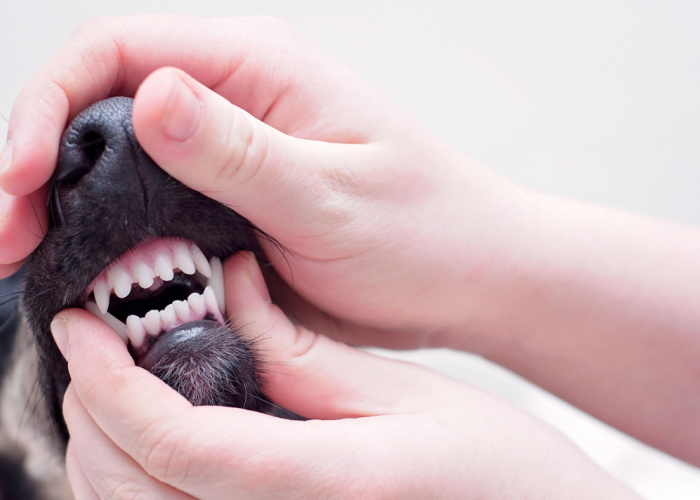
How Many Teeth Do Dogs Have? Before You Go…
Keeping your dog’s teeth clean and healthy is essential to their overall health and well-being.
And you need to take care of a few teeth since most adult dogs will have 42 teeth—yes, 10 teeth more than what we humans have.
There are four types of canine teeth: incisors, canines, premolars, and molars; each has a distinct function and can be used other than eating.
As pet owners, it’s also important to monitor not just their outside body but their oral health as well.
A few signs you should watch out for are when your dog is losing teeth, has loose or wiggly teeth, and has bad breath.
Consult with your most trusted vet if your pup is exhibiting these symptoms.
Even if he just lost one tooth, it’s best to check Fido to ensure no underlying dental problems.
Read more of our articles about dog teeth care below!












